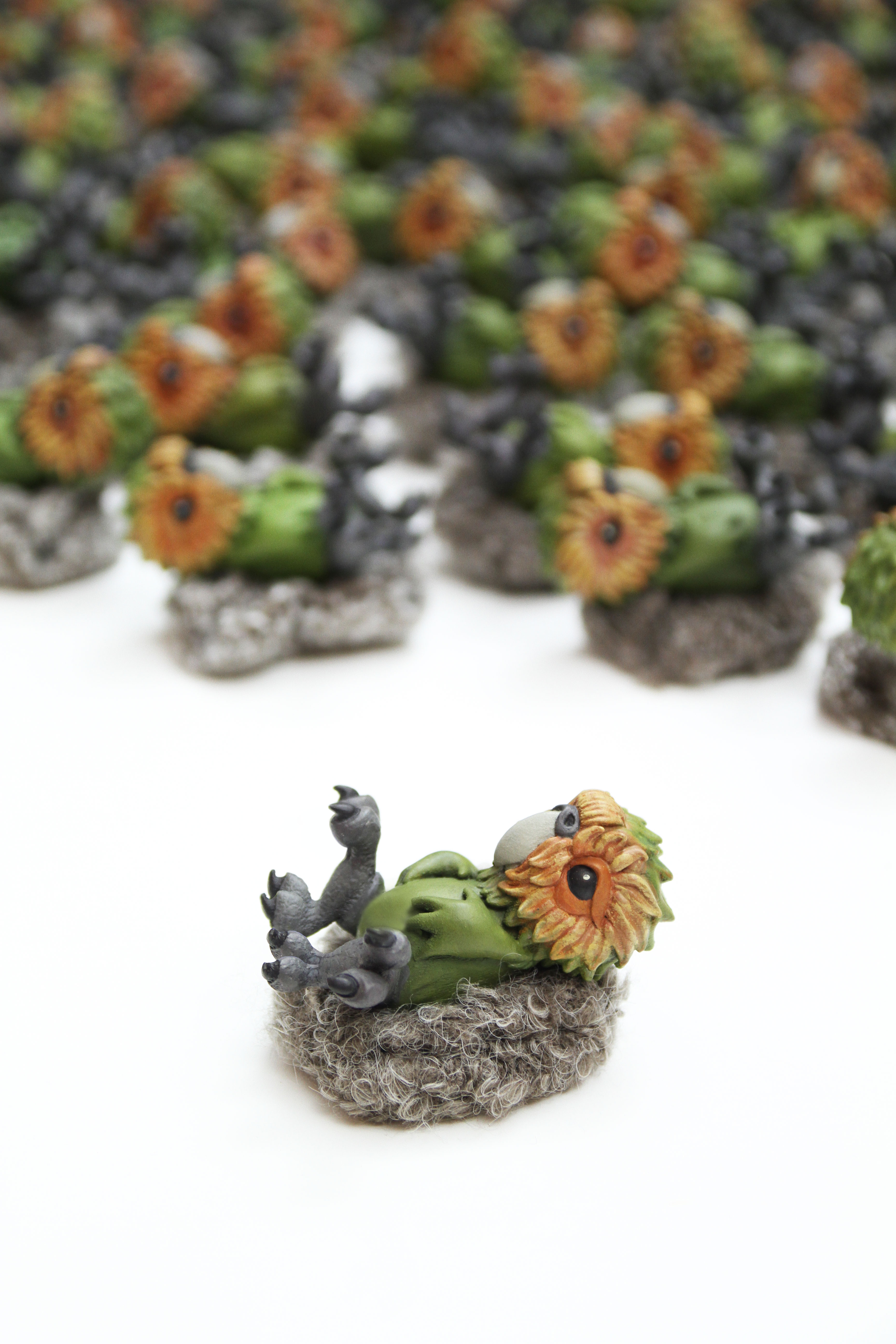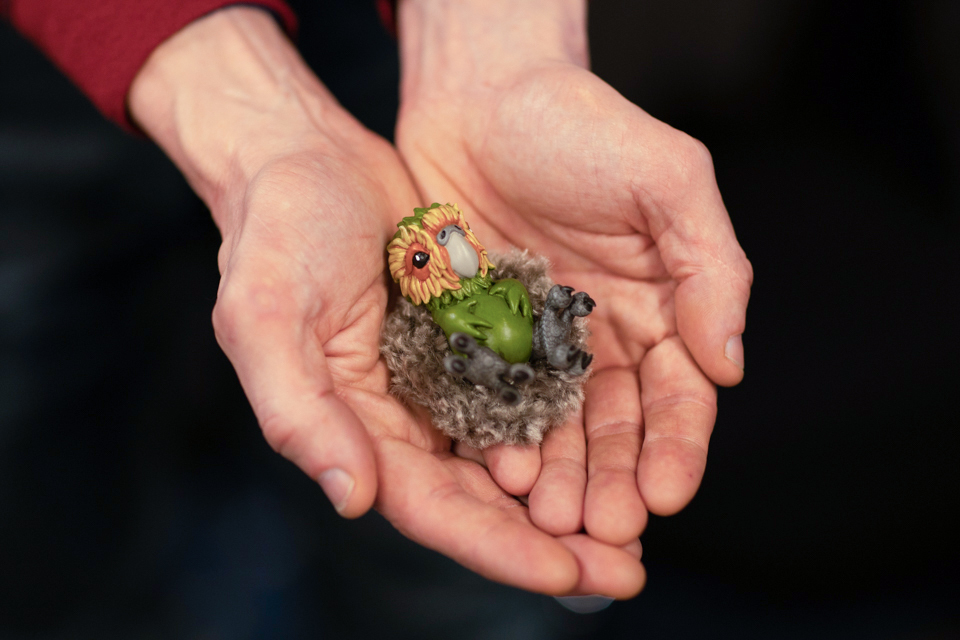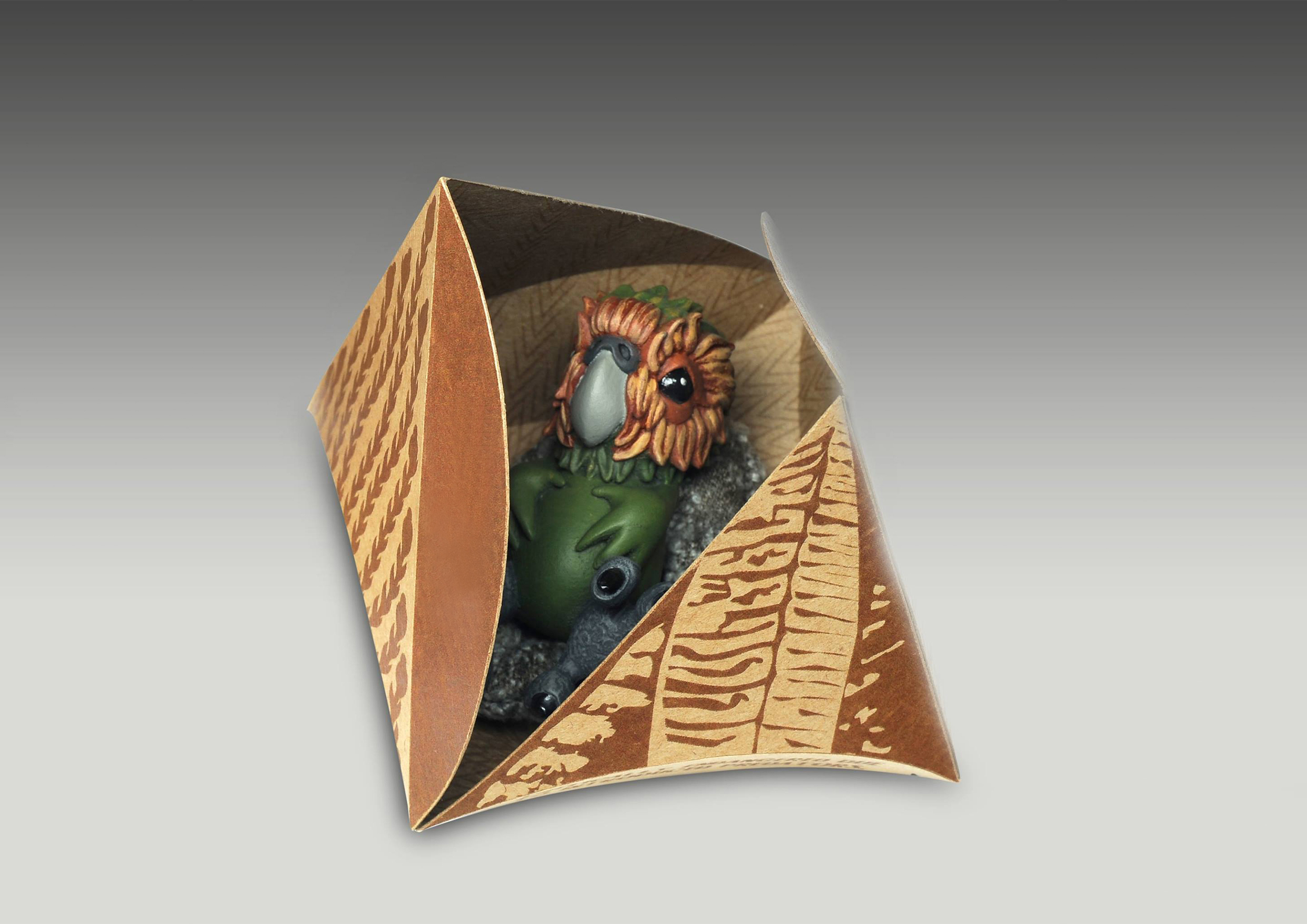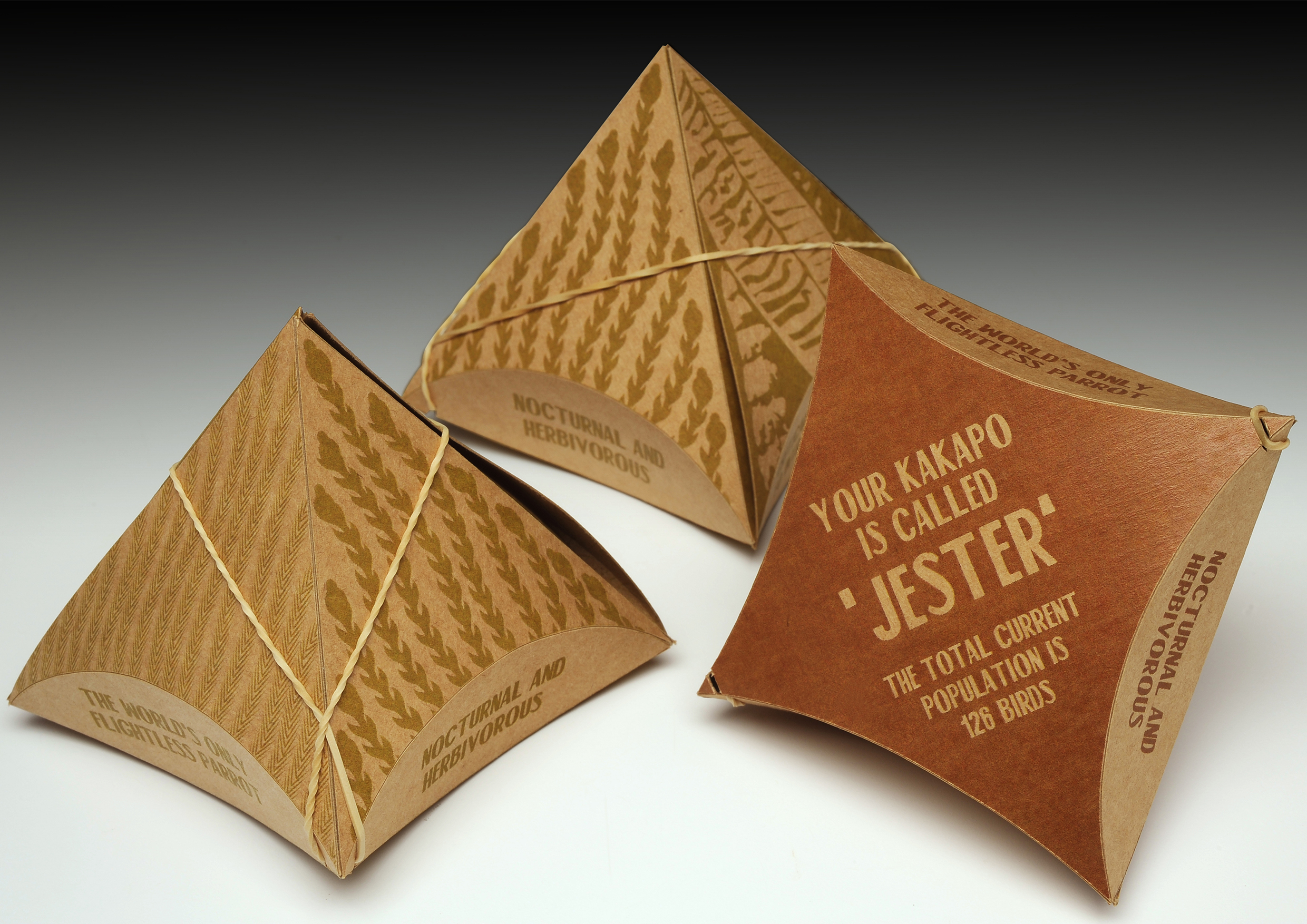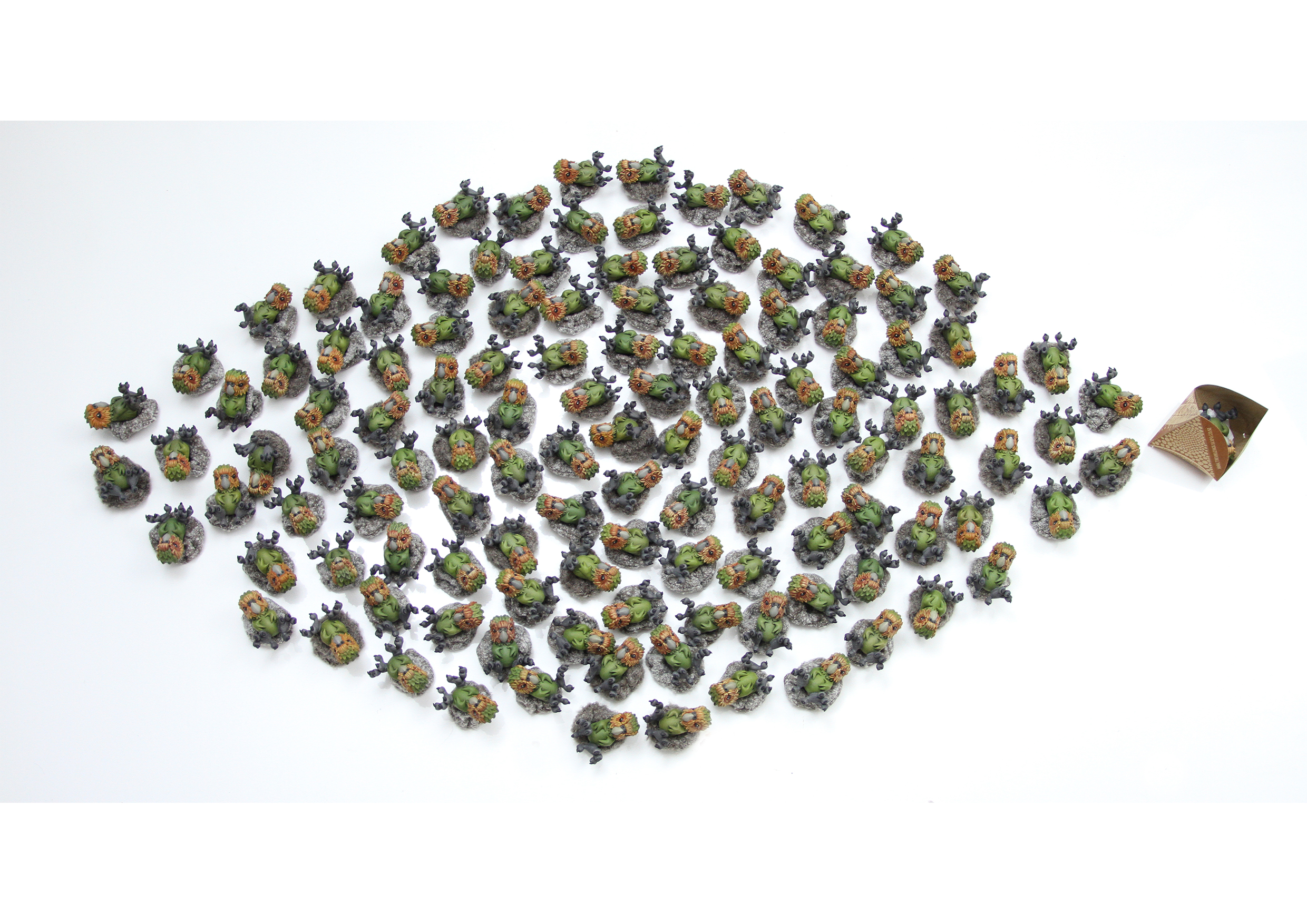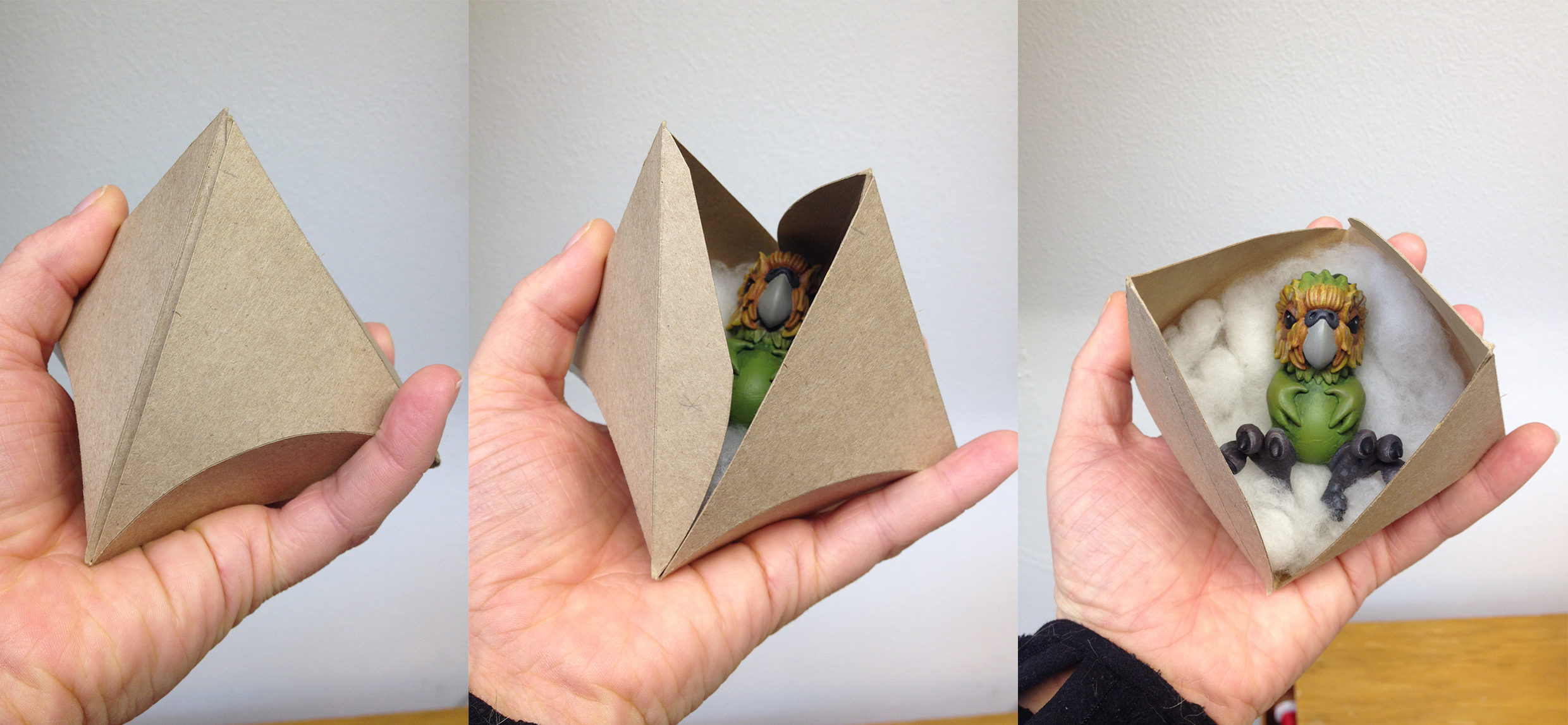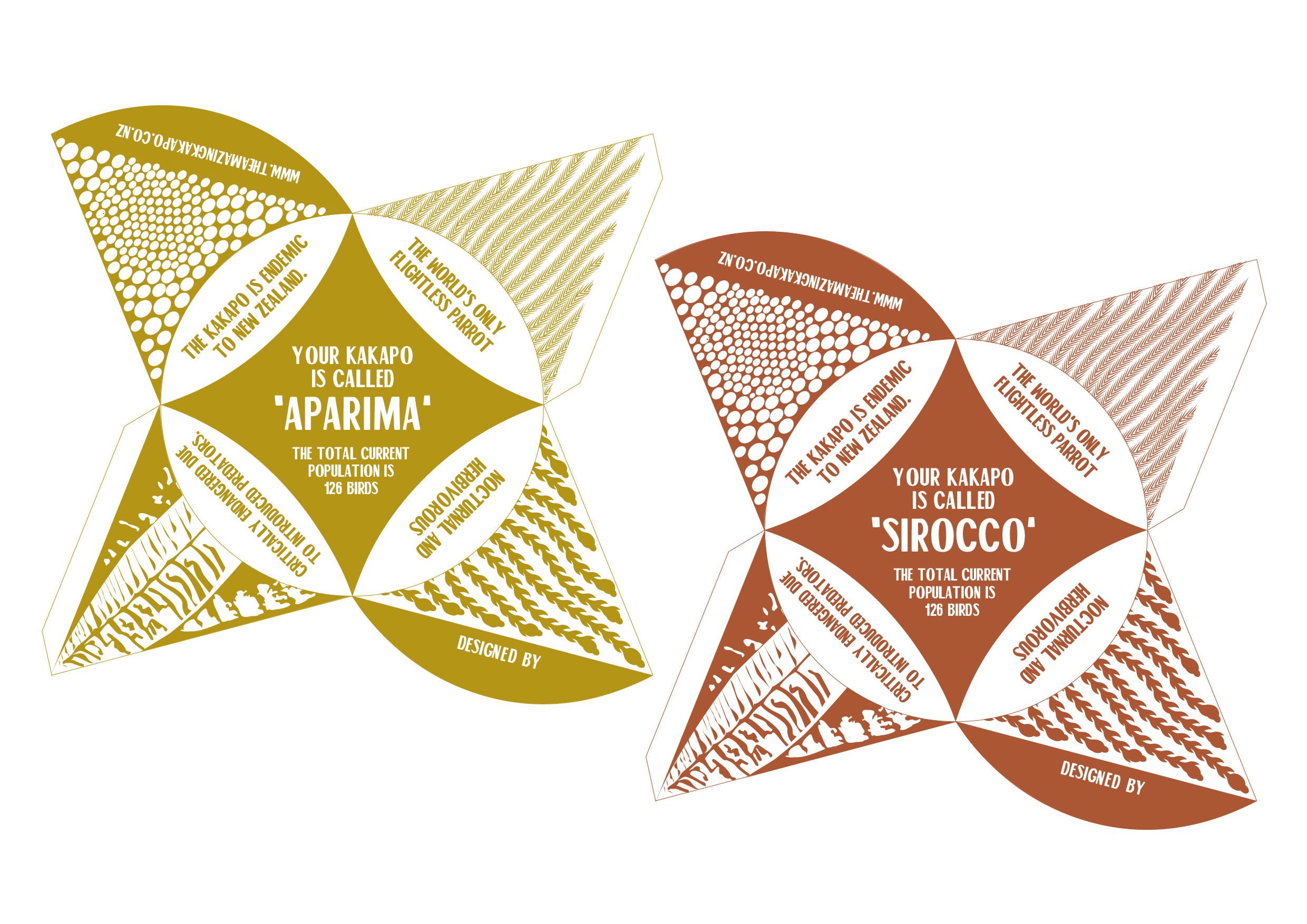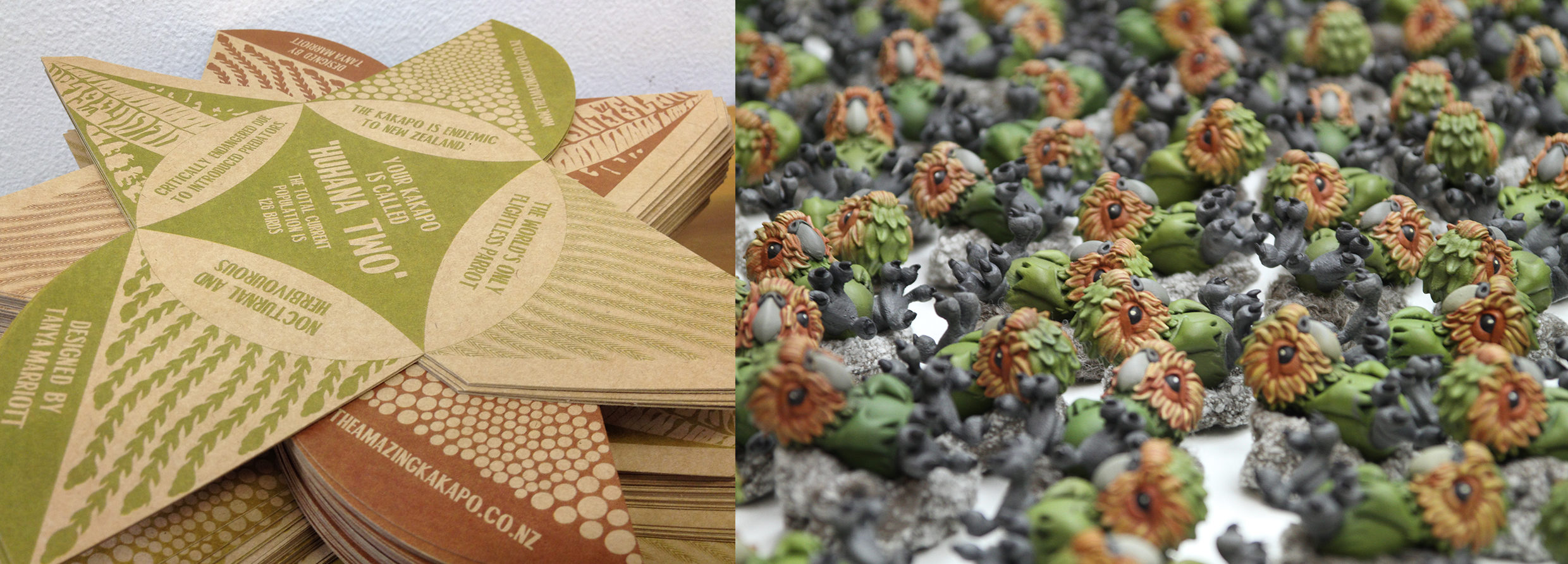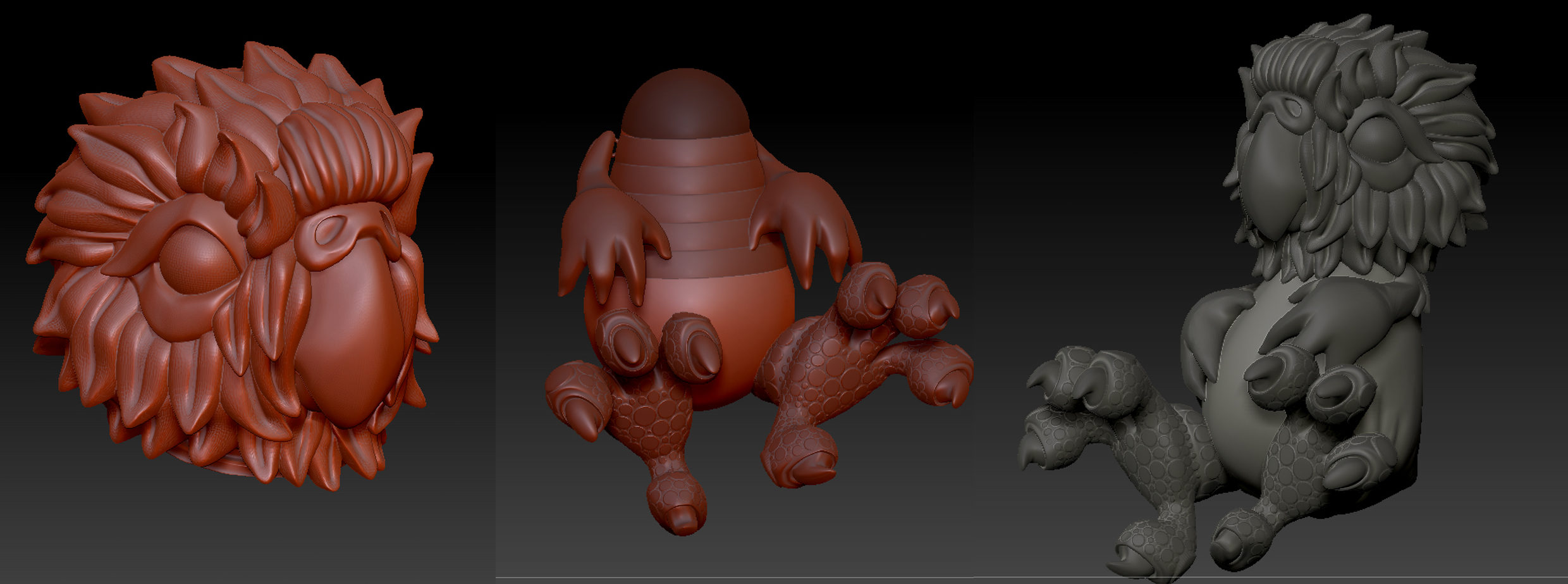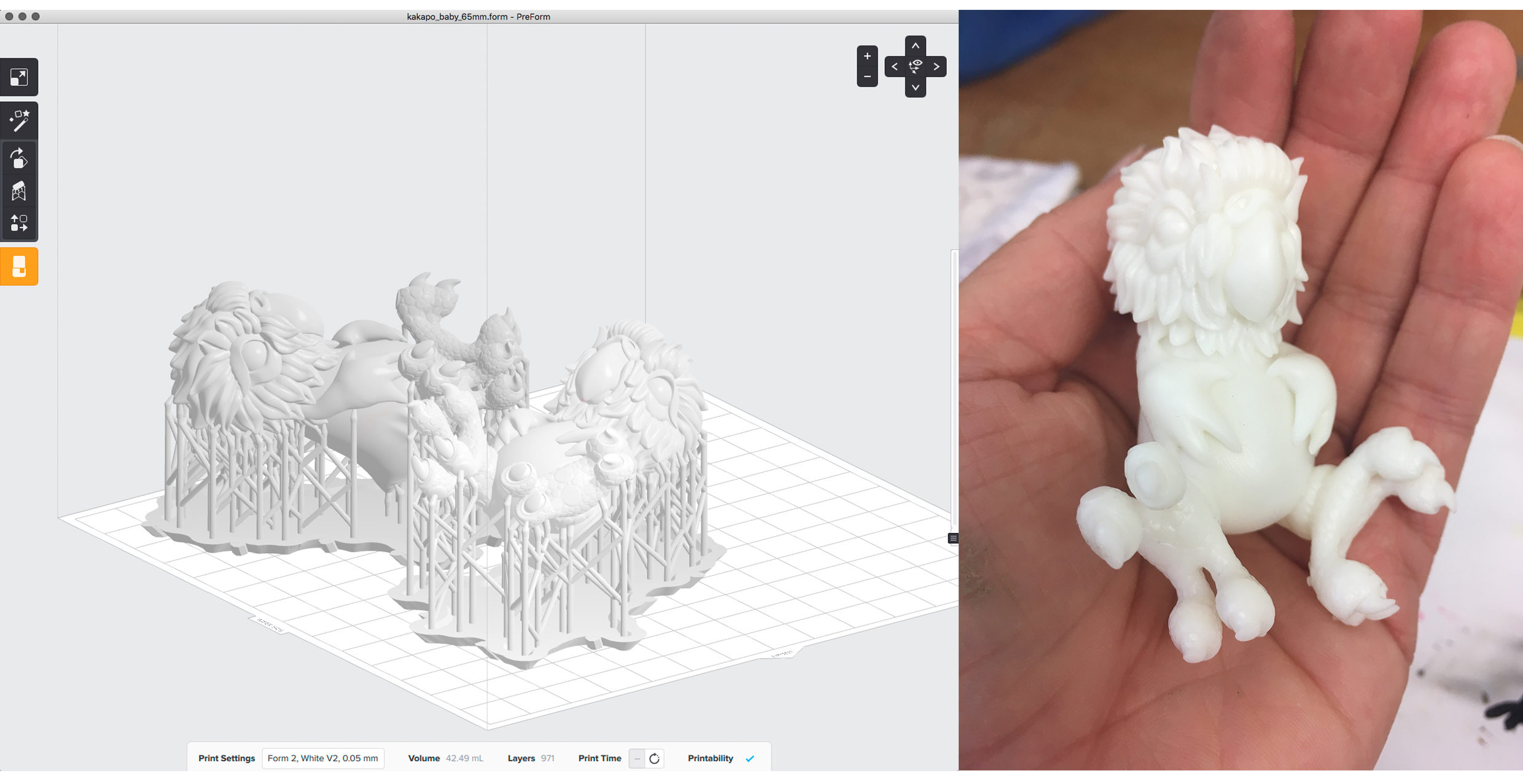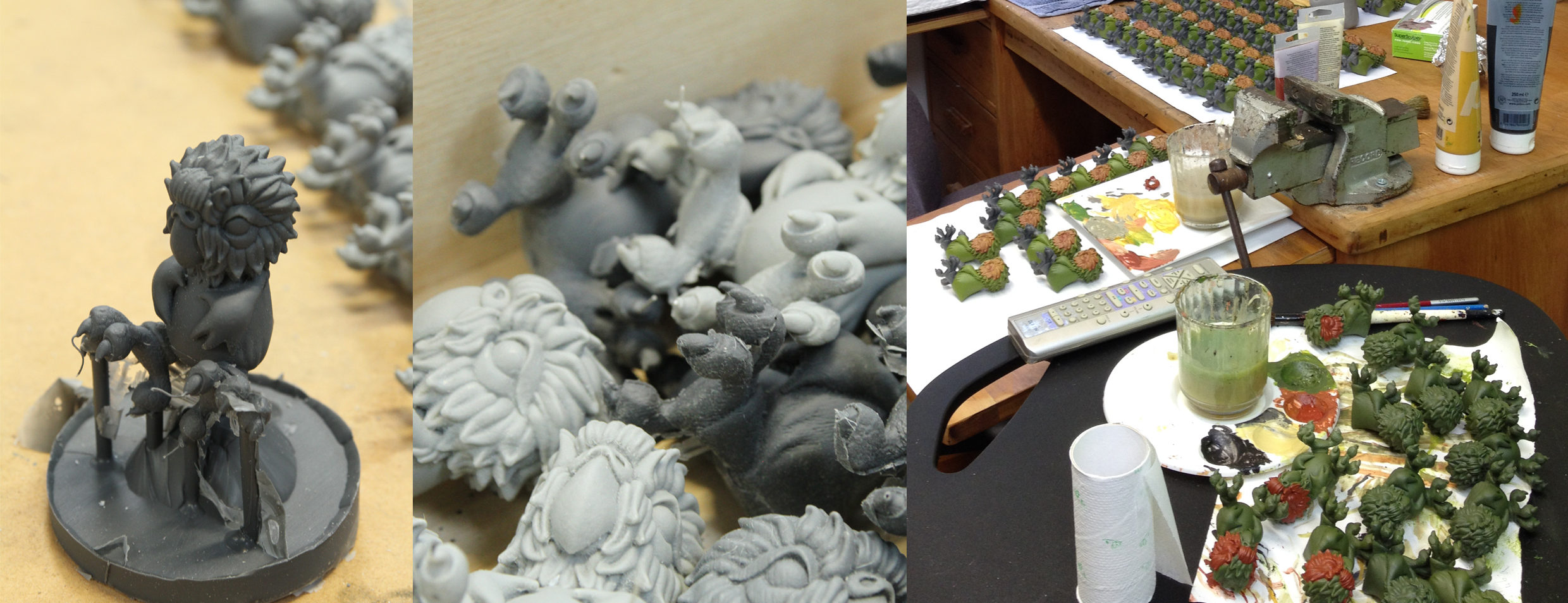126 Kakapo
2014
Resin, Acrylic paint, fabric nest, hand-made packaging.
In 2017 the Kākāpō population rose to 154 individuals after a very successful breeding season, but when this project began there were 127. Then one died tragically in a landslide while I made the first collection.This project began as a commission of souvenir items for an event. Event souvenir items by their very nature can be seen as disposable gifts valid in the moment but lacking in meaning and context, which can extend to the aesthetic design itself. This design seeks to change this perception of the souvenir through the design of a precious item that could raise awareness of endangered species by generating an emotional bond between the souvenir and the receiver. 126 Kākāpō has since grown into an ongoing project which explores the exclusive nature of critically endangered species; through our desire to connect with tangible objects.
The Kākāpō parrot was not selected on its merit as an iconic species, but because of the human sentience we have given them by naming each individual Parrot. We often have a disconnected relationship with endangered species due to our lack of physical engagement with them. Before Sirocco’s tour of New Zealand most Kiwis have never met a Kākāpō, and this exposure as a “spokesbird” gave people something to want to sustain. The Initial project documented the entire population at the time as sculpted figures packaged in a burrow, each named for it’s namesake. Conference attendees each received as a souvenir an avatar for a live bird thereby becoming the proxy supporter for the parrot. Conference attendees upon receiving their birds googled to find photos of their Parrot, purchased books about their Parrot and donated to and followed the Kākāpō Recovery trust to follow the progress of the population. With the recent additions to the population the project has continued, with only one sculpture ever made for each bird.
The birds were digitally sculpted in Maya and Zbrush and then 3D printed using a stereolithography printer. A master set was then cast into resin figures which were then hand painted by the designer. The packaging was also hand crafted by the designer to represent both a nest and a cradle. Upon removing the rubber binding the packaging pops open to reveal the bird inside laying in a fabric nest. The base of the packaging is curved so that the nest gently rocks when handled.
Exhibited at
2014
NIADA 51st Annual Show
Orlando, Florida, USA
